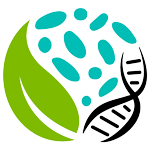Genome-wide association studies and expression-based quantitative trait loci analyses reveal roles of HCT2 in caffeoylquinic acid biosynthesis and its regulation by defense-responsive transcription factors in Populus
Jin Zhang, Yongil Yang, Kaijie Zheng, Meng Xie, Kai Feng, Sara S. Jawdy, Lee E. Gunter, Priya Ranjan, Vasanth R. Singan, Nancy Engle, Erika Lindquist, Kerrie Barry, Jeremy Schmutz, Nan Zhao, Timothy J. Tschaplinski, Jared LeBoldus, Gerald A. Tuskan, Jin-Gui Chen, and Wellington Muchero
11 July 2018 New Phytologist 220(2): 502-516, doi: 10.1111/nph.15297
Abstract
- 3‐O‐caffeoylquinic acid, also known as chlorogenic acid (CGA), functions as an intermediate in lignin biosynthesis in the phenylpropanoid pathway. It is widely distributed among numerous plant species and acts as an antioxidant in both plants and animals.
- Using GC‐MS, we discovered consistent and extreme variation in CGA content across a population of 739 4‐yr‐old Populus trichocarpa accessions. We performed genome‐wide association studies (GWAS) from 917 P. trichocarpa accessions and expression‐based quantitative trait loci (eQTL) analyses to identify key regulators.
- The GWAS and eQTL analyses resolved an overlapped interval encompassing a hydroxycinnamoyl‐CoA:shikimate hydroxycinnamoyl transferase 2 (PtHCT2) that was significantly associated with CGA and partially characterized metabolite abundances. PtHCT2 leaf expression was significantly correlated with CGA abundance and it was regulated by cis‐eQTLs containing W‐box for WRKY binding. Among all nine PtHCThomologs, PtHCT2 is the only one that responds to infection by the fungal pathogen Sphaerulina musiva (a Populus pathogen). Validation using protoplast‐based transient expression system suggests that PtHCT2 is regulated by the defense‐responsive WRKY.
- These results are consistent with reports of CGA functioning as an antioxidant in response to biotic stress. This study provides insights into data‐driven and omics‐based inference of gene function in woody species.
Citation
Zhang, J., Y. Yang, K. Zheng, M. Xie, K. Feng, S. S. Jawdy, L. E. Gunter, P. Ranjan, V. R. Singan, N. Engle, E. Lindquist, K. Barry, J. Schmutz, N. Zhao, T. J. Tschaplinski, J. LeBoldus, G. A. Tuskan, J.-G. Chen and W. Muchero (2018). “Genome-wide association studies and expression-based quantitative trait loci analyses reveal roles of HCT2 in caffeoylquinic acid biosynthesis and its regulation by defense-responsive transcription factors in Populus.” The New phytologist.
Outside Links
https://nph.onlinelibrary.wiley.com/doi/abs/10.1111/nph.15297

